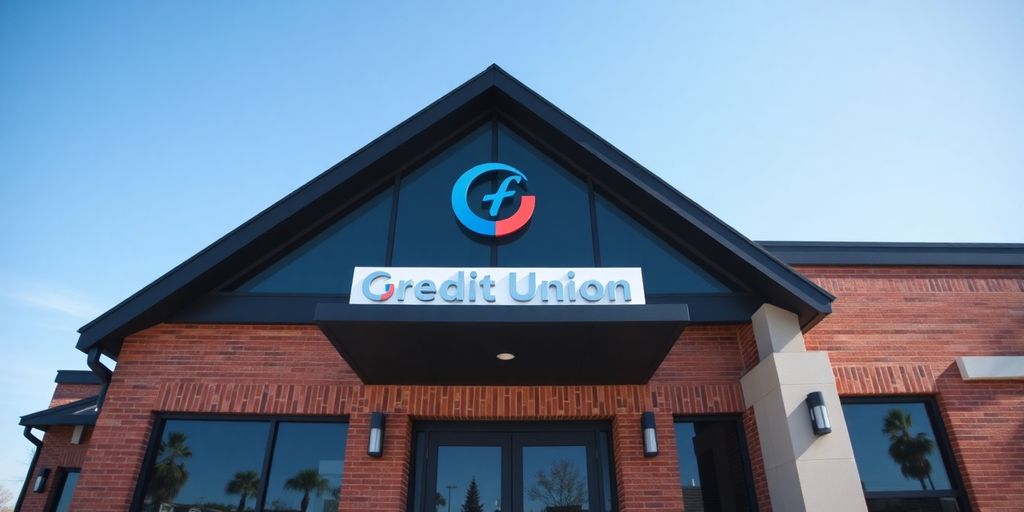Ever wondered how credit unions can stand out online? That’s where SEO, or search engine optimization, comes in. It’s all about making sure your credit union pops up when people search for financial services. With the right strategy, SEO can help credit unions get noticed, bring in new members, and save on marketing costs. Let’s break down what SEO means for credit unions and why it’s a game-changer.
Key Takeaways
- SEO helps credit unions show up in search results, making it easier for potential members to find them.
- Investing in SEO is often cheaper and more effective in the long run compared to traditional advertising.
- A good SEO strategy involves keyword research, setting goals, and regularly updating content.
- Both on-page and off-page techniques are crucial for a successful SEO plan.
- Monitoring performance and adjusting tactics is key to maintaining effective SEO.
Understanding SEO for Credit Unions
Defining SEO in the Financial Sector
Search Engine Optimization, or SEO, is a game-changer in the financial world, especially for credit unions. It’s all about making your website more visible when people search online. Think of it as tweaking your site so search engines like Google think it’s the best answer to someone’s question. For credit unions, this means using specific keywords and creating content that speaks to potential members. This way, when someone searches for financial services, your credit union pops up first.
Importance of SEO for Credit Unions
Why does SEO matter? Well, nearly 68% of clicks go to the first five results on a search page. If your credit union isn’t in that top tier, you’re missing out. SEO is vital for credit unions to stay relevant and attract new members. It’s more cost-effective than traditional ads and keeps working long after you set it up. Unlike a one-time ad, good SEO keeps bringing in traffic over time, which is great for growing your membership.
Key Components of SEO Strategy
Creating a solid SEO strategy involves several key steps:
- Keyword Research: Identify what potential members are searching for and make sure your site uses these terms.
- Content Creation: Develop engaging and informative content that answers questions your audience might have.
- On-Page and Off-Page Optimization: Ensure your website is user-friendly and that other reputable sites link back to you.
SEO isn’t just a one-time effort. It’s an ongoing process that requires regular updates and tweaks to stay ahead of the competition.
Benefits of SEO for Credit Unions
Increased Online Visibility
For credit unions, standing out in a crowded digital space is crucial. SEO helps by boosting your online presence, making it easier for potential members to find you. Nearly 68% of all clicks on search engines go to the first five results. If your credit union isn’t there, you’re missing out. SEO can help you climb those ranks, ensuring you’re seen by more people who are searching for financial services.
Cost-Effectiveness Compared to Traditional Marketing
Unlike traditional marketing methods that can be quite expensive, SEO is a more budget-friendly option. While you might spend money initially to set up your SEO strategy, the benefits are ongoing. Once your content is optimized and starts ranking, it continues to draw in traffic without additional costs. This ongoing benefit makes SEO a smart investment, especially for smaller institutions that need to stretch their marketing dollars.
Long-Term Value of SEO Investments
SEO isn’t just a short-term fix; it’s a long-term strategy that keeps paying off. As you continue to optimize your site and content, your search rankings improve, leading to more organic traffic over time. This sustained growth can translate into more memberships and stronger customer loyalty. Plus, SEO complements other digital marketing efforts, creating a cohesive strategy that supports your credit union’s overall goals.
SEO is like planting a tree. It takes time and patience, but once it grows, it provides shade and fruits for years to come. Investing in SEO is about building a strong foundation for your credit union’s online presence, ensuring you stay relevant and competitive in the digital age.
By focusing on SEO, credit unions can not only increase their visibility but also enjoy cost-effective marketing that provides long-lasting results. It’s a strategy that aligns perfectly with the goals of building strong customer relationships and enhancing community engagement. Learn more about content marketing advantages for smaller financial institutions.
Building an Effective SEO Strategy

Conducting Thorough Keyword Research
Before diving into any SEO strategy, start with solid keyword research. This means figuring out what terms your potential members are searching for. Use tools like Google Keyword Planner or SEMrush. Look at what your competitors are doing, but don’t just copy them. Find those unique keywords that fit your credit union’s niche. Keywords are like the backbone of your SEO efforts, so choose wisely.
Setting Measurable SEO Goals
Once you have your keywords, it’s time to set some goals. What do you want to achieve? Maybe it’s more traffic to your loan pages or better local visibility. Set clear, measurable goals. For instance, aim to increase website traffic by 20% over the next six months. Break these goals down into smaller tasks, like optimizing certain pages or creating new content. Having clear goals makes it easier to track your progress.
Planning and Executing SEO Actions
With goals in place, plan your actions. This could be creating a content calendar, deciding which pages to optimize, or figuring out your backlink strategy. For credit unions, start with your most visited pages for quick wins. During execution, focus on creating valuable content and building quality backlinks. Collaborate with local businesses for link-building opportunities. Regularly check your progress and tweak your strategy as needed.
Remember, SEO is not a one-time task. It requires ongoing effort and adjustments to stay effective.
Best Practices for Credit Union SEO
On-Page Optimization Techniques
Getting your credit union’s website to rank well in search engines starts with on-page optimization. This involves tweaking each page’s elements to make them more search-friendly. Focus on the following:
- Title Tags and Meta Descriptions: Ensure these are unique and contain relevant keywords. They help search engines understand what your page is about.
- Header Tags: Use H1, H2, and H3 tags to structure your content. This not only helps with SEO but also improves readability.
- Internal Linking: Connect your pages with relevant links. This helps search engines crawl your site and also keeps users engaged longer.
"The key to effective on-page SEO is making sure every element on the page is aligned with the search intent of your target audience."
Off-Page SEO Strategies
Off-page SEO is all about building your credit union’s reputation and authority online. This is mostly achieved through link building. Here’s how you can do it:
- Guest Blogging: Write articles for reputable sites in the financial sector. This not only earns you backlinks but also positions your credit union as a thought leader.
- Social Media Engagement: Share your content on social media platforms to increase its reach and attract more backlinks.
- Local Citations: Ensure your credit union’s name, address, and phone number are consistent across all directories and platforms.
Content Creation and Blogging
Creating fresh and relevant content is crucial for SEO. It keeps your website updated and helps you rank for more keywords. Consider the following tips:
- Regular Blogging: Start a blog on your website. Discuss topics that are of interest to your members and potential members.
- Use of Multimedia: Incorporate videos, infographics, and images to make your content more engaging.
- Answer Common Questions: Use your content to answer frequently asked questions about credit unions. This can help you rank for voice search queries too.
By following these best practices, your credit union can improve its search engine rankings, attract more visitors, and ultimately grow its membership base. Remember, SEO is a long-term strategy that requires consistent effort and adaptation to changing trends and algorithms.
Monitoring and Improving SEO Performance

Using Analytics Tools for Tracking
Keeping tabs on your SEO efforts is like checking the weather before you head out—it’s essential. Analytics tools are your best friends here. They help you track keyword performance, webpage traffic, and other crucial metrics. Google Analytics and Google Search Console are popular choices. They provide insights into what’s working and what’s not. You can see which keywords bring in the most traffic and which pages are lagging behind. This data is gold for making informed decisions.
Adjusting Strategies Based on Performance
So, you’ve got the data. Now what? It’s time to roll up your sleeves and tweak your strategy. If a keyword isn’t pulling its weight, try swapping it out for something more relevant. Maybe a new trend has emerged, and you need to hop on it. Or perhaps, a piece of content isn’t getting the love it deserves—analyze why and make the necessary changes. Remember, SEO isn’t a set-it-and-forget-it deal. It’s about continuous improvement.
Identifying Areas for Improvement
SEO is a bit like gardening. You plant seeds (your strategies), but you need to keep an eye out for weeds (issues) that could choke your growth. Regularly audit your site to spot technical hiccups, like slow loading times or broken links. Refresh old content to keep it relevant and engaging. And don’t forget about link building—it’s a powerful way to boost your site’s authority. Effective SEO for credit unions involves general SEO practices to ensure compliance with standards and local SEO strategies to enhance visibility in local search results. Learn more about effective SEO strategies.
SEO is a journey, not a destination. It’s about staying curious, being flexible, and always looking for ways to do better.
In-House SEO vs. SEO Agency
Managing SEO internally can be a good choice if your credit union has the resources to support it. Having an in-house team means you have direct control over the SEO strategies and can align them closely with your overall marketing goals. You can quickly adapt to changes, coordinate with other departments, and maintain consistency in your brand voice.
However, the downside is that maintaining an in-house team requires ongoing investment in training and development to keep up with the ever-changing SEO landscape. SEO is not static, and search engine algorithms are always evolving. This means your team needs to stay ahead of the curve, which can be both time-consuming and costly.
Benefits of Hiring an SEO Agency
On the flip side, hiring an SEO agency can bring a wealth of experience and expertise that might be hard to cultivate internally. Agencies have the advantage of working with a variety of clients, giving them a broader perspective on what strategies work best across different industries. They can provide insights and implement tactics that your team might not have considered.
An agency can also be more cost-effective in the long run, as it eliminates the need for constant training and can deliver results more efficiently. Plus, outsourcing frees up your internal resources, allowing your team to focus on core activities rather than getting bogged down in the technicalities of SEO.
Choosing the Right SEO Partner
When deciding between an in-house team and an agency, consider your credit union’s specific needs and capabilities. If you have a strong marketing team that can handle the nuances of SEO, an in-house approach might make sense. But if you’re looking for specialized skills and a fresh perspective, an agency could be the way to go.
Think about the long-term goals of your credit union. Do you need quick results, or are you focused on building a sustainable SEO strategy over time? Also, assess the potential return on investment from each option.
Ultimately, the decision comes down to what aligns best with your credit union’s objectives and resources. Whether in-house or outsourced, the key is to ensure that your SEO efforts are well-coordinated with your overall marketing strategy.
Integrating SEO with Other Marketing Channels
Combining SEO with PPC Campaigns
When you think about SEO, it’s easy to picture it as a standalone effort. But pairing it with pay-per-click (PPC) campaigns can be a game-changer for credit unions. SEO and PPC together can enhance your visibility by covering both organic and paid search results. Imagine targeting those tricky keywords, like ones with "bank," that are tough to rank for organically. PPC can fill that gap. Plus, data from PPC campaigns can provide insights into which keywords convert best, feeding back into your SEO strategy.
Utilizing Social Media for SEO
Social media doesn’t just help you connect with members; it boosts your SEO efforts too. Platforms like Facebook and Twitter are perfect for sharing content that might not be SEO-friendly but still engages your audience. Engagement on social media can indirectly affect your SEO by driving traffic and building brand awareness. Think of it as a way to nurture leads and create loyalty. Here are some ways to use social media effectively:
- Share blog posts and updates regularly.
- Engage with your audience through comments and messages.
- Use hashtags to increase visibility.
Creating a Cohesive Marketing Strategy
Integrating digital marketing with traditional strategies is more than just a buzzword; it’s a necessity for credit unions aiming to enhance customer engagement and boost revenue. A cohesive strategy means aligning your SEO with other marketing efforts like email campaigns and offline promotions. This alignment ensures consistent messaging and maximizes your reach. Here’s how to create a cohesive strategy:
- Align your branding across all channels.
- Use data from one channel to inform others.
- Ensure your messaging is consistent.
A well-rounded marketing strategy doesn’t just rely on one tactic. It blends multiple channels to create a seamless experience for your audience.
Conclusion
So, there you have it. SEO isn’t just some fancy buzzword; it’s a real game-changer for credit unions. By getting your website to show up higher in search results, you’re not just boosting traffic but also bringing in more members. It’s like planting a tree—takes time and patience, but the payoff is worth it. And let’s be real, who doesn’t want more people finding out about the awesome stuff your credit union offers? Whether you’re a big player or just starting out, SEO can help level the playing field. Just remember, it’s a marathon, not a sprint. Keep at it, and you’ll see the results.
Frequently Asked Questions
What is SEO and why is it important for credit unions?
SEO, or Search Engine Optimization, is a way to make your website show up better in search results. For credit unions, this means more people can find you online, which can lead to more members and business.
How can credit unions benefit from using SEO?
Credit unions can gain more visibility, attract new members, and save money compared to traditional advertising. SEO helps your site show up in search results, bringing in more visitors over time.
What are some key parts of an SEO strategy for credit unions?
Important parts include finding the right keywords, creating good content, and making sure your website is easy to use. These help your site rank higher in search results.
How do credit unions choose between in-house SEO and hiring an agency?
Choosing between in-house SEO and an agency depends on your resources. An in-house team offers more control, but an agency usually has more expertise and can keep up with changes in SEO trends.
What role does content creation play in SEO for credit unions?
Creating helpful and interesting content can attract more visitors to your site. It helps answer questions people might have and shows that your credit union is knowledgeable.
How can credit unions measure the success of their SEO efforts?
Success can be measured by looking at website traffic, search rankings, and new memberships. Tools like Google Analytics can help track these numbers and show how well your SEO is working.






